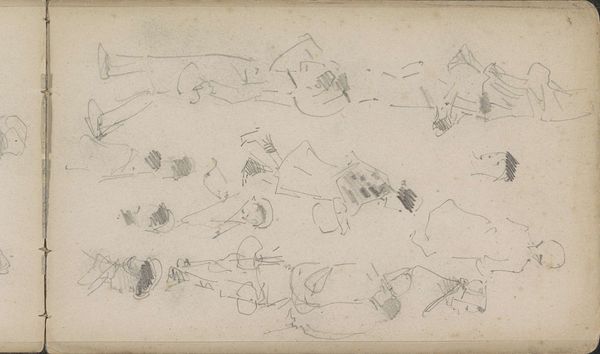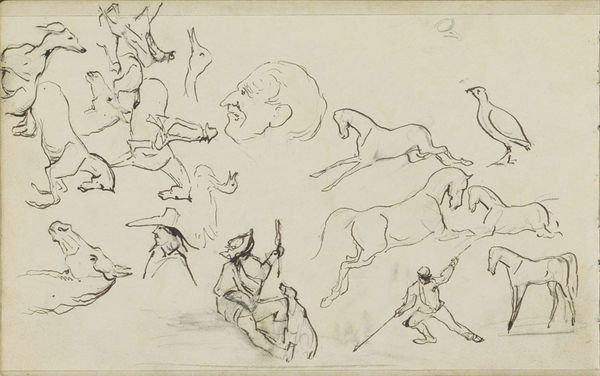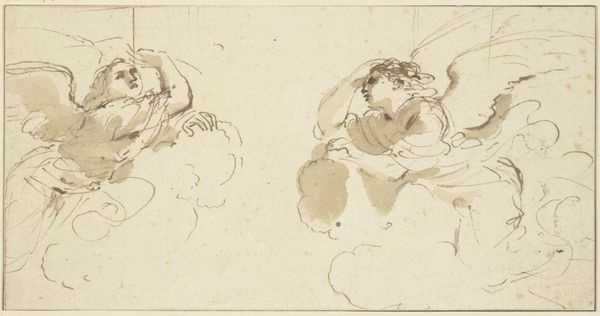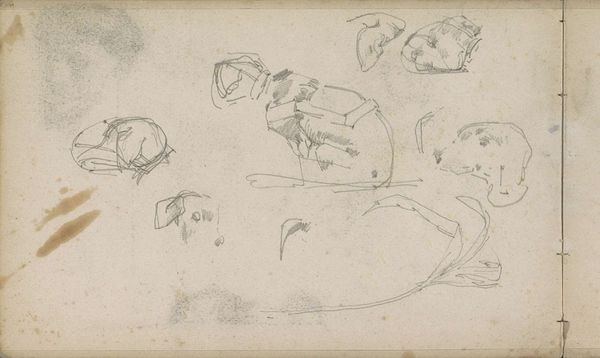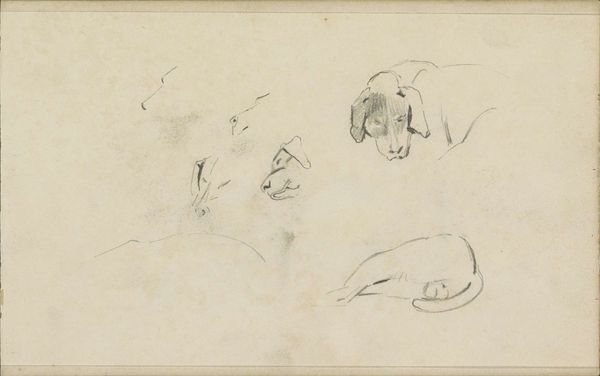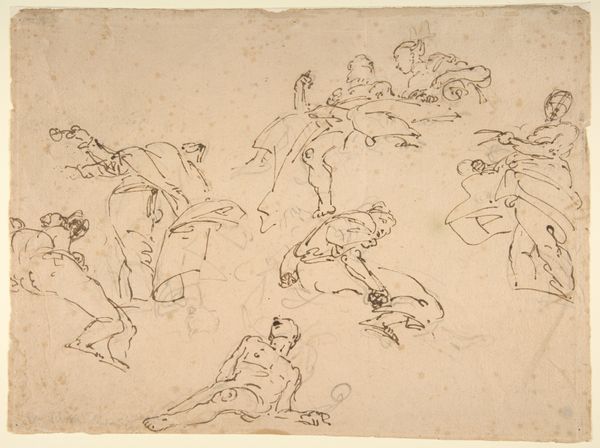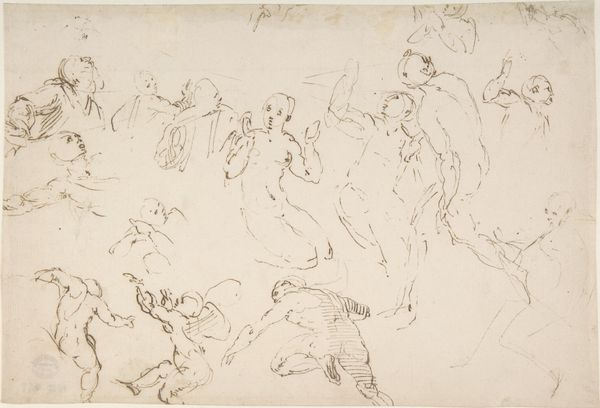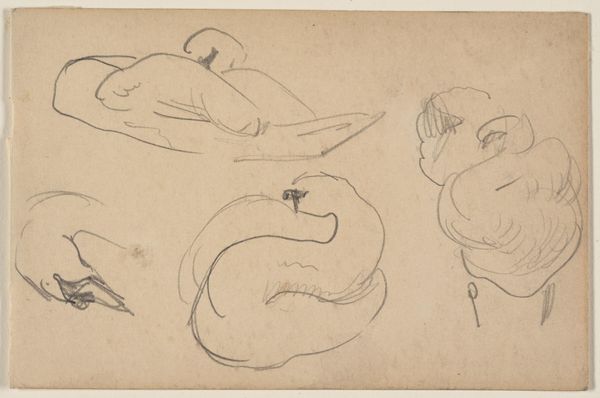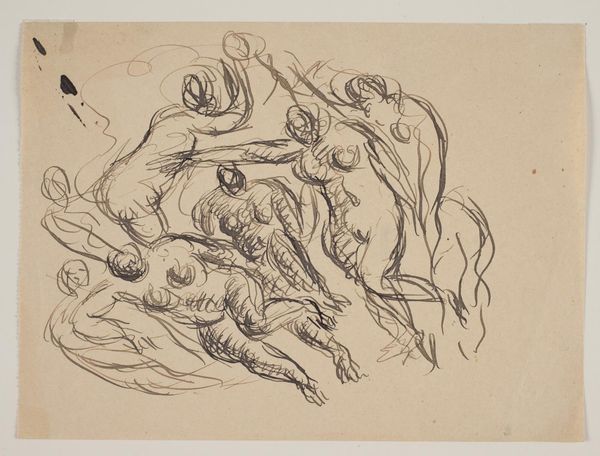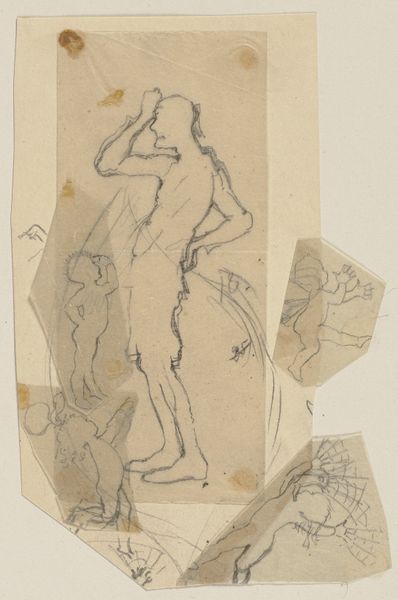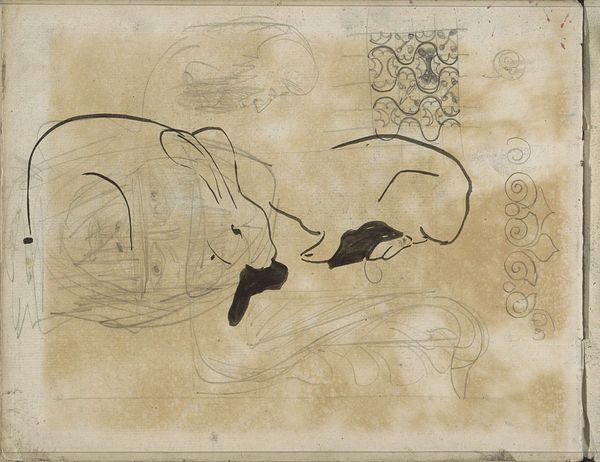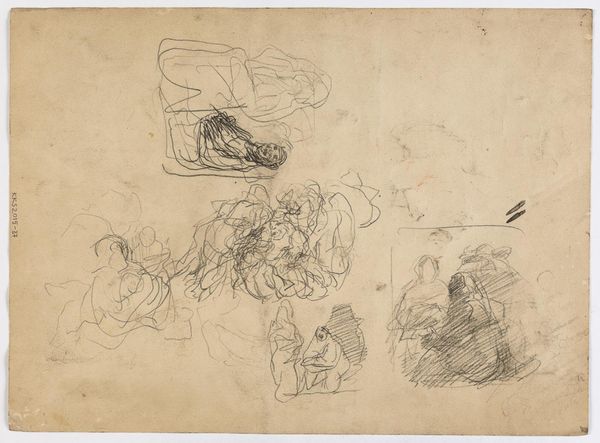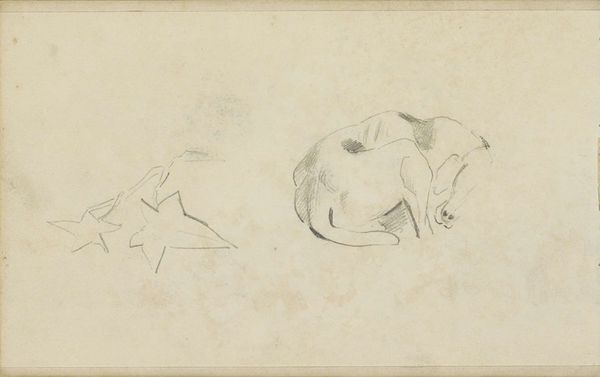
Schetsblad met ruiter, paarden en panter over een figuurstudie 1808 - 1863
0:00
0:00
drawing, ink
#
drawing
#
animal
#
pen sketch
#
figuration
#
ink
#
romanticism
#
pen-ink sketch
#
sketchbook drawing
#
history-painting
#
sketchbook art
Dimensions: height 242 mm, width 326 mm
Copyright: Rijks Museum: Open Domain
Curator: This energetic drawing, titled "Schetsblad met ruiter, paarden en panter over een figuurstudie", is attributed to Eugène Delacroix and thought to originate from between 1808 and 1863. What impressions strike you right away? Editor: Chaotic energy! The scratchy ink lines give the piece a raw, impulsive feel. The layering creates a visual depth, like we're glimpsing something partially obscured, an archetypal struggle perhaps? Curator: Absolutely. The sketch vibrates with the undercurrents of Romanticism. Delacroix, a key figure in that movement, challenged academic conventions through a lens of emotional intensity and exotic subject matter, fueled by colonial and orientalist trends of the period. These passions fueled many artists, even as they reproduced unequal power structures. Editor: It's intriguing how he combines studies of powerful animals with figural work. Note the recurring motif of the horse – historically linked to power, virility, but also conquest and even domestication, which brings us to issues of control and freedom. Even the panter is an obvious nod towards colonial themes. Curator: Exactly, the horse emerges again and again in art as a symbol of domination, as a reflection of colonial projects across time. And even in its association with royalty, it underlines social stratifications and the assertion of dominance. It serves almost as a commentary on societal structures. Editor: And look how Delacroix captures the horse's spirit in mere strokes. The fluidity reminds us of other depictions throughout art history, reaching back into classical myth. You know, images of Centaurs and similar figures have captivated humanity for generations, exploring the boundaries of nature, reason and civilization itself. It also looks almost like some type of heraldic symbol. Curator: Indeed. But that layering of different concepts over the body is key. I wonder too, with this positioning and overlapping, how this reflects Delacroix’s own entanglement with societal roles of his time, maybe a wrestling for an identity beyond such constraints? What remains crucial, though, is for viewers like us to acknowledge these inherent societal structures depicted, and analyze accordingly. Editor: I agree entirely, there’s much to think about. The piece seems like a window into Delacroix's creative process, filled with both animal vitality and historical reflection. Curator: Precisely, a complex historical conversation captured in deceptively simple lines.
Comments
No comments
Be the first to comment and join the conversation on the ultimate creative platform.
